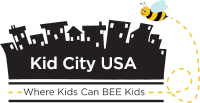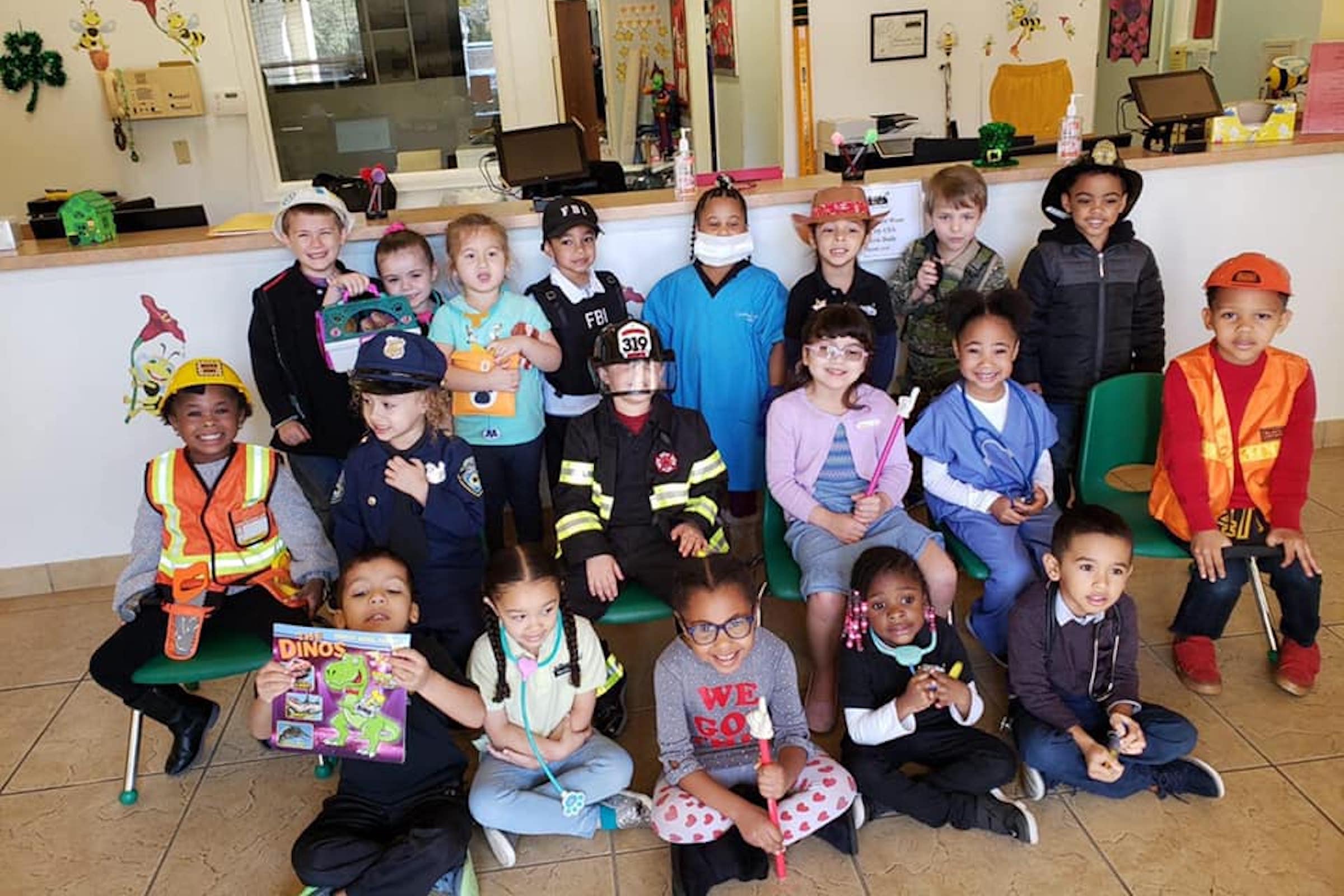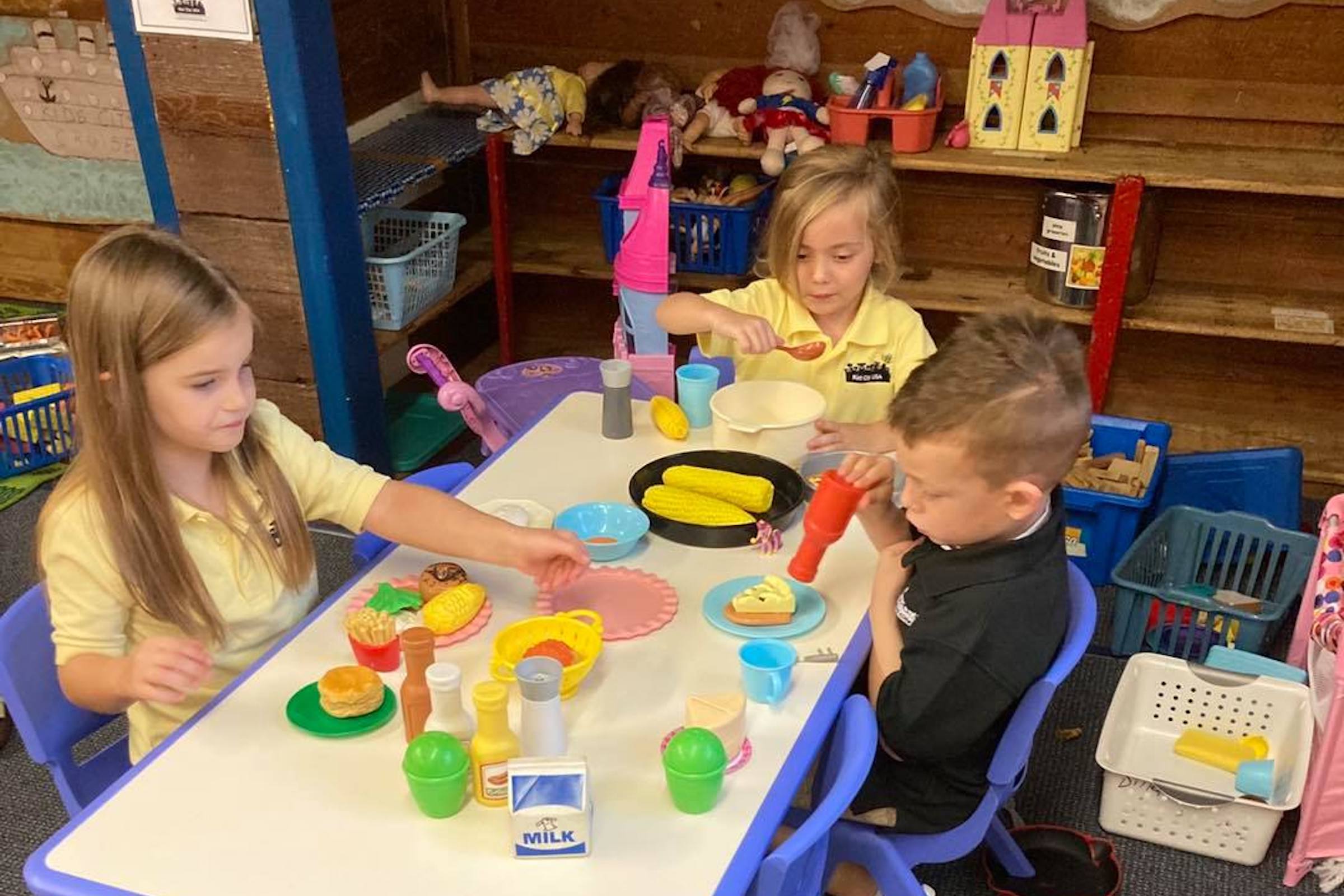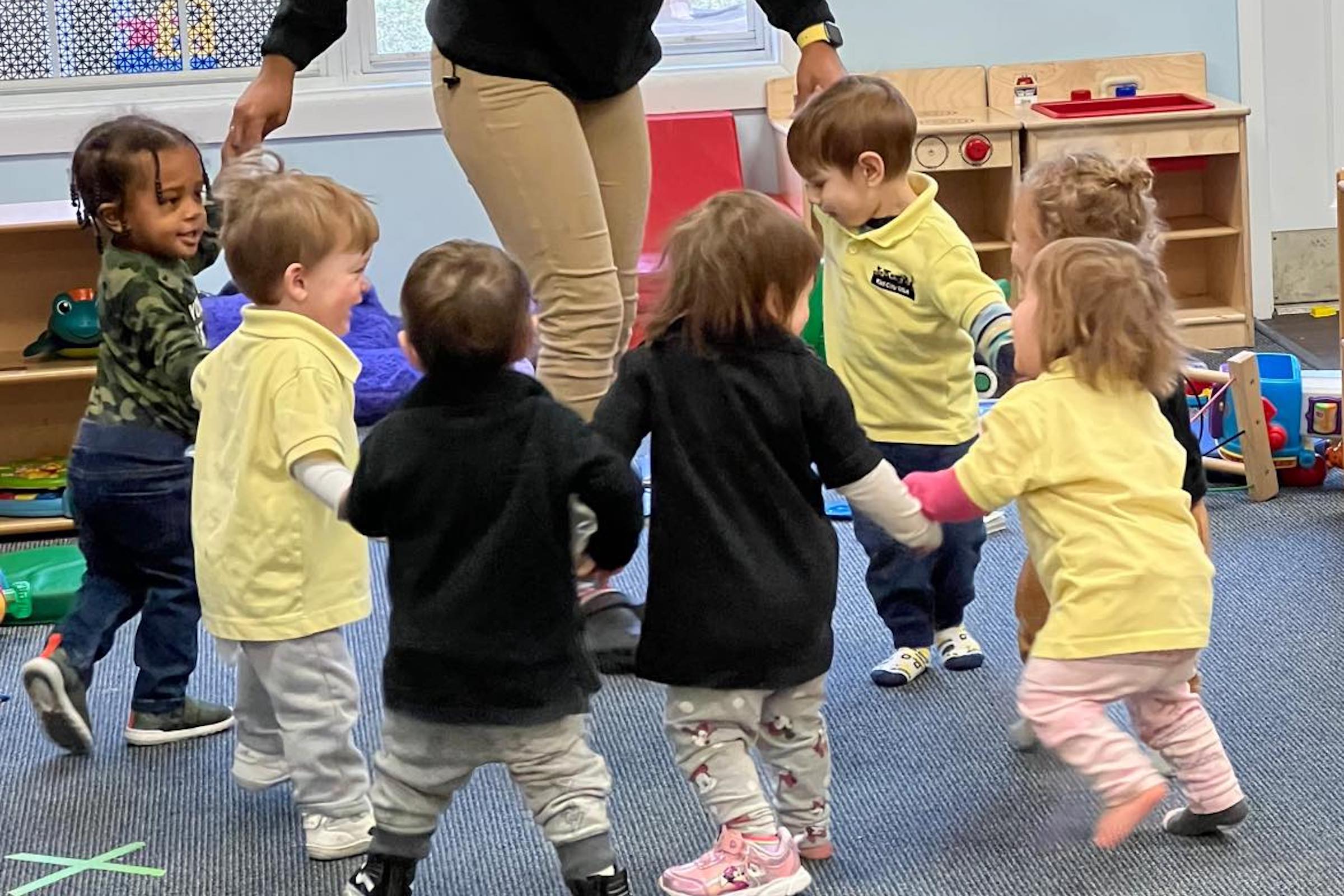Are you expecting a new bundle of joy in your life? Or, maybe you’re already watching your little one grow and explore the world! Whatever stage you’re in, it’s always a good idea to get informed about the importance of early childhood education.
A warm, supportive environment for kids in these early years can help them develop social skills and build character. And when you have teachers who understand kids’ behavior and development, you’ve got all the right elements for a great education.
Here are some of our favorite early child development facts, along with an explanation of what they might mean for you:
1. Numbers Are Language, Too
Who out there isn’t charmed by the efforts of a small child trying to recite the numbers from 1 to 10? If you’re trying to teach your kid the number system, you might be surprised to know that numerical concepts are a form of language.
Scholars argue about the exact details, but your kid will likely understand the concepts behind the numbers 1-4 without having to learn them. They’ll learn the names for these concepts later on (“one,” “two,” and so on), but they can tell whether there are one or two french fries on the plate in front of them.
Anything higher than that, though, is a different story.
An experienced preschool teacher might tell you that reciting the numbers from 1 to 10 is nice, but the real goal is for your child to be able to point at a collection of items and say how many are there. This is a huge step in being able to match a sound (like the word “seven”) with an abstract concept (the “seven-ness” of a collection of seven things).
2. Kids Feel Emotion Differently
If you’ve ever witnessed a temper tantrum, you know how devastated a toddler can seem over the smallest thing. But this isn’t just for show—studies tell us that toddlers feel emotion in a more full-body way than adults do.
Kids don’t always know that emotions are temporary. They may feel trapped in a certain emotion, without the understanding that it can come and go. It might even be hard for them to articulate how they feel about a situation, making it more of a struggle for them to do anything about it.
At preschool, kids learn to manage their emotions. Once they’re in an environment with other kids and a variety of adults, they’ll have many more models of how to move and interact in the world.
3. Preschool Counts
There are a few different reasons why preschool leads to all kinds of positive outcomes later on in life. A jump start on learning is only one of these.
The other reasons have to do with emotional coping, health, and interaction with others. Our BEE All You Can BEE system also incorporates soft skills like relating to others and self-discipline. You might find that, at an early age, these are the real keys to loving school and learning.
As your child grows older, they will encounter lots of setbacks and hurdles, just like any other kid. But with a determined mindset and a secure sense of self, your child can approach these setbacks with the grit they need.
And don’t underestimate the importance of empathy and interpersonal learning. You might be concerned about how your kid will deal with the everyday stressors that other kids may create, but learning how to handle these things early on will build an excellent foundation for the future.
4. Attachment Styles Form Early On
Have you ever heard of anxious attachment, insecure attachment, or avoidant attachment? You might have heard people in their 20s and 30s talk about these attachment styles, and this is because these styles become very important in romantic relationships and adult friendships. These styles are meant to describe what kind of relationship a person has to the feeling of bonding with other people.
But did you know that attachment styles form when people are young—actually, very young?
According to Sean Brotherson, a Family Science Specialist, kids form attachments during their first two to three years of life. Children need stimulating, but not stressful environments and those with secure attachment styles will be more open to exploration and learning.
There are a few different kinds of attachment styles, but many experts categorize these into two main groups: secure attachment and insecure attachment.
If your child, for whatever reason, starts their journey with an insecure attachment style, this doesn’t mean it’s too late to do something about it. As long as they are in a well-informed, appropriately stimulating environment, they can work toward rebuilding a secure attachment style.
5. Language Isn’t Learned—It’s Acquired
If your little one hasn’t started talking yet or hasn’t even entered the world, you might find yourself worrying about how to best teach them the intricacies of human language. How can you teach them something as complex as language?
Born Ready
Well, it turns out that, unlike algebra or Medieval history, spoken language isn’t something kids learn. It’s something their brains are specially equipped to do, from the moment they’re born. As they move through the world, they’ll learn things like reading and writing, but speaking is a skill children are already built to acquire.
This is why linguists and child psychologists generally avoid using the term “language learning” unless talking about second languages (like learning a foreign language later in life). Instead, they tell us that kids go through something called “language acquisition.”
Kind of Like Walking
Many linguists compare language acquisition to the way a baby “learns” to walk. You can help your child walk and do all sorts of things to get your kid to start walking earlier than usual. The fact is, though, your child will eventually figure out how to walk just by practicing and watching other people walk.
Like walking skills are built into the design of the human body, language skills are built into the design of the human mind.
The main thing a human baby needs in order to start speaking is exposure to language. So keep talking to your child, and talk to other adults and older kids in front of your child. Or better yet, introduce your young one to situations where they’ll have lots of different kinds of linguistic input, like a preschool.
6. “Baby Talk” Is Actually Important
Sometimes people treat baby talk as something that’s silly or even detrimental, but that parents do because they can’t help it. We’re here to tell you that this exaggerated, high-pitched, slow way of speaking is actually a natural way to get kids to understand the fundamentals of language.
Linguists and psychologists sometimes call this “parentese” or “motherese,” though a more official term for it is child-directed speech. Getting babies and toddlers to understand that the long streams of sound adults produce are actually made up of meaningful words is a big step. Accentuating the dips and rises can help kids catch on.
Like we noted in the previous section, child-directed speech isn’t something that teaches your kid language. As long as they get a nice amount of exposure, your child will acquire language whether or not you use baby talk with them.
But it’s something that can make the language acquisition process more enjoyable for kids, and it could save them a bit of frustration.
7. Babies and Young Kids Understand Prosody
One of the first things babies pick up on is something called prosody. You can think of this like the melody of human speech. Prosody is something child-directed speech does a great job of emphasizing, and it’s wonderful to see kids picking up on the patterns.
Have you ever witnessed a baby “talking” with convincing rhythms and melodies of nonsense? It’s adorable to see, and even downright funny.
But what’s happening is something amazing. When babies do this, they’re practicing an important part of human language: prosody. They pay attention to the rhythms of how the people around them speak, and they understand that these contain a great deal of meaning.
Think about how to differentiate a question from a statement, especially if you don’t understand any of the words. In English, a question gets a higher pitch at the end. This is just one of the pieces of information prosody can convey, and babies often pick up on that meaning even before understanding the meaning of words.
Prosody can also help kids learn about emotions and speaking styles. And it serves as a stepping stone to understanding more complex aspects of speech.
8. Kids Don’t Come With a Theory of Mind
Do you know what “theory of mind” is?
It’s a psychological concept that experts use to draw conclusions about human intelligence, communication, and sense of self. To put it in basic terms, theory of mind is a person’s ability to realize that different people have different thoughts.
Babies don’t come with a theory of mind already set up. Instead, they acquire this over time. A baby who doesn’t have a theory of mind yet might not understand that you don’t have access to the same set of knowledge they do.
For example, let’s say a baby drops a toy while you’re out of the room.
When you come back in, you might wrack your brain trying to understand why they’re crying. Meanwhile, the baby won’t understand that you didn’t see what happened. They know what happened, and they don’t yet have the ability to know that your knowledge is different from theirs.
9. The Critical Period is Real
You can still learn all kinds of things, including languages, at older ages in life. The critical period for learning just means that the early years are times of rapid growth. Toddlers develop more things during the critical period, and much more smoothly than they would later on.
If you’re a multilingual family and you want your child to know the languages the rest of your family speaks, it’s a good idea to continue using these languages around the baby. This can provide an important cultural access point later in life.
Don’t worry about your baby being confused or having language delays in English. When we say the critical period makes kids quick learners, we mean it. In fact, monolingual kids are actually the minority on the planet.
Your child will have lots of exposure to English, even if they aren’t getting it at home. And preschool is one way to ensure your kid is learning lots of different ways of speaking at once. Even within one language (in this case, probably English), there are so many variations and speech patterns to explore.
10. Play Is an Essential Part of Early Childhood Education
Playtime is a way for kids to unwind, yes. But it’s also an excellent way for them to learn the things that aren’t taught in classrooms.
The United Nations High Commission for Human Rights even recognizes play as a right that every human child deserves. It’s essential for mental development as well as social development, and adults can’t always design the “perfect” playtime scenario.
The beauty of play is its sense of freedom. When kids feel comfortable making their own fun, they explore new parts of themselves.
And if you’re wondering about how we incorporate play into our early childhood programs, you can ask our advisors directly! We’ll be happy to hear from you and address any concerns you might have.
11. Kids Learn From Other Kids
There are lots of different theories about how kids learn social cues and interpersonal skills. But almost all of them place heavy importance on interactions with other kids their age.
When it comes to giving kids an environment that helps them “learn how to learn,” a well-designed preschool system tops the list. Whether it’s in the classroom or during playtime, kids will teach each other social skills and give each other a variety of language input that can really make a difference.
We’re All Along for the Ride
Early childhood education is full of surprises, but the right environment will give your kid the support they need to face whatever comes their way. We’re excited to be on this journey with you, and we hope you are too!
If you live in Florida or Indiana, you can use our location tool to find a Kid City USA preschool near you. We care about your kids, and we’ll use our expertise and certified training to help them grow to the best they can be.





